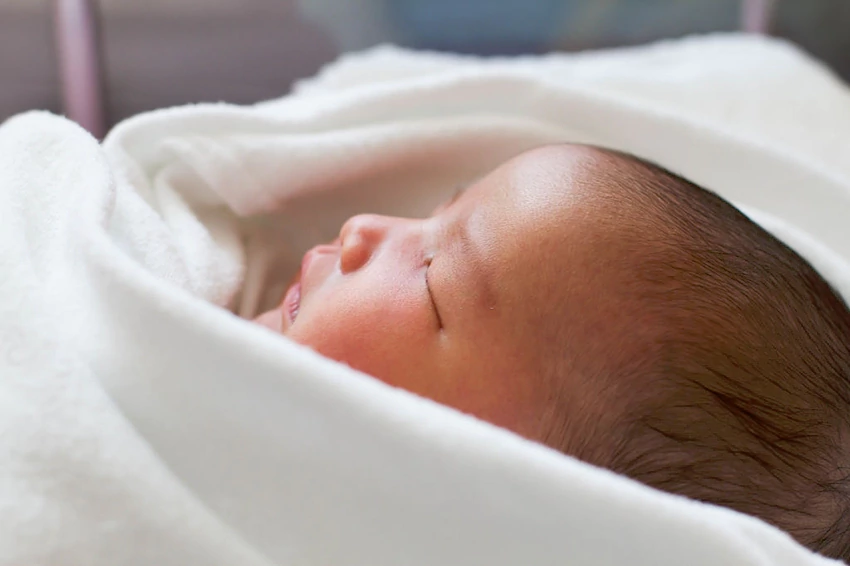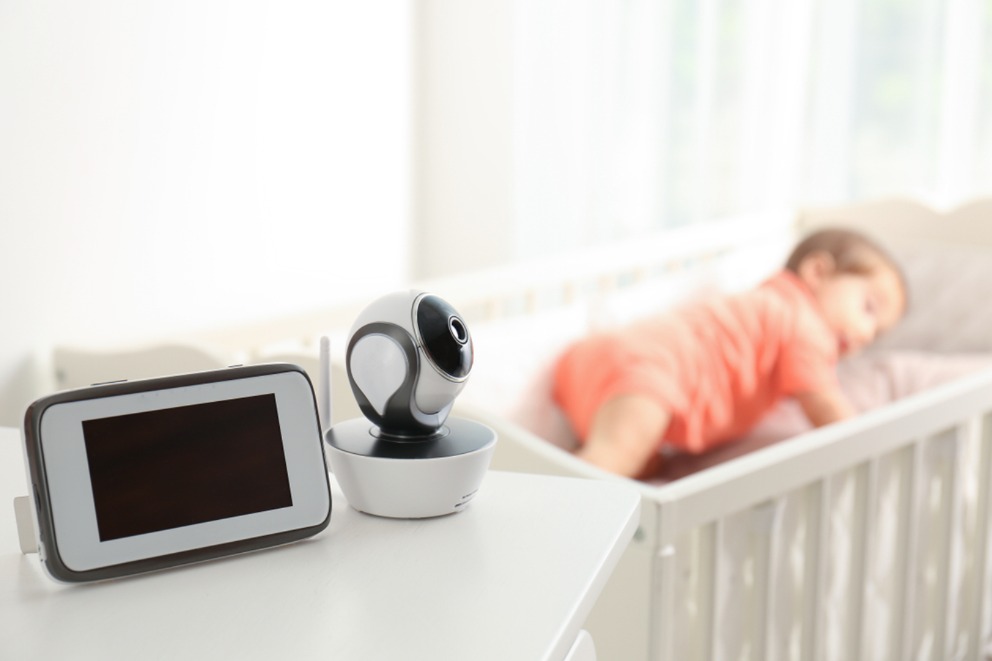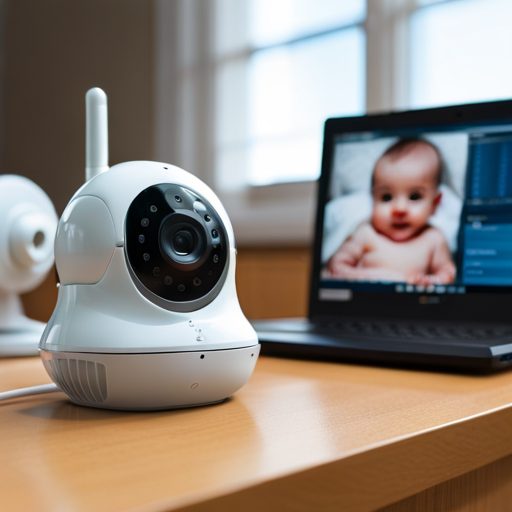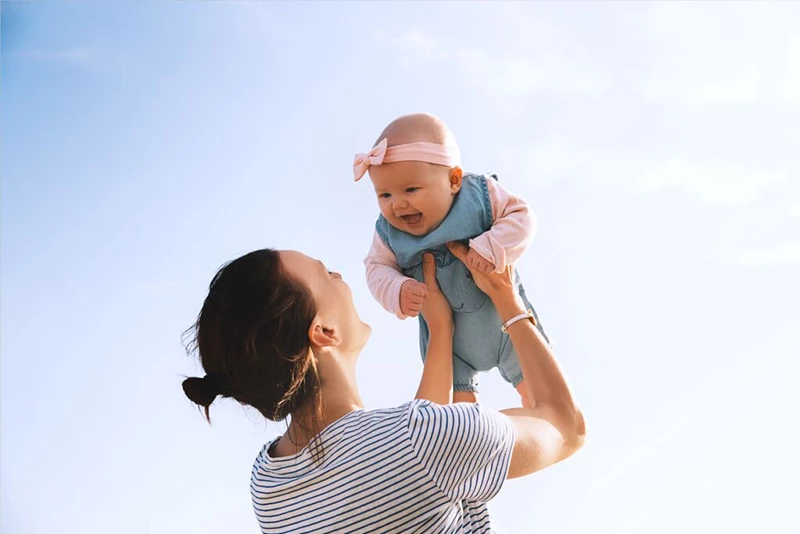Is your baby sleeping face down?
The American Academy of Pediatrics (AAP) recommends placing your child on his back for naps and bedtime. This will help avoid risks such as choking, poor breathing, and even SIDS (Sudden Infant Death Syndrome).
But you can also avoid these risks by using a firm sleep surface, keeping soft objects and loose bedding out of the crib or bassinet, and avoiding overheating which can lead to problems with breathing.
Avoiding all these things will help you keep your little one safe while he sleeps!
You want to make sure that when your baby is asleep he’s in the safest position possible. Below we have discussed how to stop baby sleeping face down and make his sleeping comfortable. So let’s dig deep inside.
How To Stop Baby Sleeping Face Down
When placing the baby into his crib or bassinet, place him on his back, not on his side or tummy.
Just like with adult beds, avoid using bumpers or blankets in your baby’s crib. Instead, attach fitted sheets snugly around the mattress. Although this may take extra time and effort when you change them, they will help keep out loose blankets and other things that could be hazardous to your baby’s health.
We all love our soft toys but we need to remember that they can cause suffocation if a baby accidentally gets one over their face while sleeping. Leave these out of sight and always check under the bedding for any mistakes before laying her down to sleep.
Make sure the sleeping area is not too hot for your baby by checking under his blankets or sheets to see if he’s kicking them away. If so, try using a lighter blanket or sheet. You may also want to adjust room temperature and humidity levels with a humidifier.
When you’re ready to stop baby sleeping face down, dress her in sleep clothes that are loose-fitting and made of soft, breathable fabrics like cotton to help avoid overheating. And make sure she doesn’t get too hot while playing since overheated babies can’t always control their body temperature well enough to regulate it correctly when sleeping.
If you are still finding it difficult to keep your little one on his back when sleeping, place him in the crib or bassinet while he is still awake. This way, you won’t have to worry about him falling asleep on his tummy before drifting off into dreamland.
You can also try putting your baby in the crib when she’s drowsy but not yet all the way asleep. She may adjust quickly to this new routine without much fuss.
If you are worried about SIDS , make sure that your baby doesn’t get too hot during sleep by using a thin blanket or sheet and avoiding thick pajamas and over-bundling. Also, don’t cover your baby’s face or head with stuffed animals or other soft objects since they might obstruct their breathing if they shift around in their sleep their mouth falls within the object.
Remember that SIDS is the leading cause of death among infants, and 90 percent of babies who die from it are under a year old. While we can’t prevent every tragedy, we know that following safer sleep guidelines for babies will help to reduce the risk. Getting little ones used to these practices when they’re young can mean a lifetime of better sleep habits.
So if you are wondering how to stop baby sleeping face down, follow all the safe sleep recommendations and you should notice a change in your child’s nap time almost immediately!
Why is my baby facing down?
Babies often fall asleep while breastfeeding or bottle-feeding and will naturally roll towards their stomachs as they drift off into deeper stages of sleep. Sometimes parents don’t know their babies are positioned this way until they wake up for nighttime feeding and find them sleeping face down.
If this is a common occurrence with your baby, try to encourage them to sleep on their backs from the very beginning of the feeding by using a wedge or rolled up blankets that raise the head of the bed just enough to keep his chin from falling into his chest as he feeds. In addition, always feed your baby in an upright chair and never on a couch or bed – even for daytime naps.
Also remember Don’t let him fall asleep while swaddled and think too hard about where he’s positioned (which can lull you right off to dreamland yourself). Once you find him like this it’s pretty easy to roll him over without waking him, but if he wakes suddenly it could be disconcerting for both of you.
Read more: Best baby carrier for preemie baby
What if my baby is more comfortable on his stomach?
Some babies prefer to sleep face down because it can give them a sense of feeling more tightly swaddled and wrapped up, which feels comforting and secure, so some parents choose this position for their babies by keeping them swaddled at night.
But remember: Babies should be able to wiggle out of the swaddle as they get older and become more active, moving into a sleeping bag or just loose blankets instead. If your baby’s doctor approves it, you might consider switching to something like the Zipadee-Zip (Zipadeezip) at bedtime instead of continued use of traditional swaddling.
It still provides that “feeling like baby is still swaddled” sensation, but doesn’t restrict the arms and leaves the option open for those who want to transition from swaddle before their babies become too mobile.
A good middle ground position (which we prefer and recommend) is to place your child on his back with a small blanket folded under his chest and tummy – not over his face – so that he feels more “burrowed in” and supported while still being able to breathe freely.
This also helps him feel like he’s being cuddled without giving him the feeling of being wrapped up tight enough to interfere with breathing or cause overheating problems.
Read More: BABY FLAILING ARMS AND LEGS WHILE SLEEPING – How to Deal With It
What are some ways I can keep my baby sleeping safely on her?
To keep your baby sleeping safe, avoid letting her sleep on a soft surface like pillows or fluffy blankets. Try placing her in her crib with just a fitted sheet over the mattress and adding another sheet if it feels too drafty throughout the night.
And always keep the room at a temperature that is comfortable for you – never hotter than 75 degrees F – as overheating can become an issue, too.
In addition, avoid any items that could cover your baby’s face while she sleeps such as loose-fitting sheets, long hair, or even stuffed animals.
All of these things pose a suffocation risk for the baby and should be avoided when she’s napping and sleeping – no matter what position she’s in.
What about pacifiers? Some babies use pacifiers to feel safer or more secure while they sleep, but pacifiers should never be used at the same time as a bottle.
Be sure to wait until the baby finishes drinking from his bottle before offering a pacifier. Also, make sure it doesn’t fall out of the baby’s mouth when you put her down for a nap or at bedtime and take steps to prevent this from happening by using the right size pacifier (smaller is better).
For example, if she’s still waking up crying because the pacifier falls out repeatedly throughout the night and day, try switching to a smaller one that will be easier for the baby to keep in her mouth during sleep and minimize these interruptions.
Keeping these tips in mind can help your little one become an expert at getting the sleep she needs when she needs it most.
Read: Can Babies Choke on Puffs – The Great Baby Puffs Debate
What is the difference between “SIDS” and “suffocation”?
SIDS, also known as Sudden Infant Death Syndrome, is a diagnosis given when an infant dies suddenly and unexpectedly and after a thorough investigation, there does not appear to be an explanation for the death.
Suffocation is caused by a physical obstruction that prevents breathing such as something covering the nose and mouth. This can be accidental such as suffocating under bedding or intentional such as strangulation via hanging. Suffocation can occur during sleep so babies who are sleeping face down may be more at risk for this complication.
Sudden Unexplained Infant Deaths (SUID) is a term used to describe infants who die suddenly and unexpectedly with no explanation for the death.
This includes SIDS, suffocation, and other related causes such as accidental hanging/strangulation without being able to determine if it was intentional or not. This often occurs when a baby rolls into something that obstructs their breathing like loose bedding or plush toys that they can roll off of, but some babies are found after sleeping face down which adds another layer of danger.
Asking your pediatrician about safe sleep practices before settling on one method for you and your baby will help ensure the most comfortable night’s rest possible!
Should I worry if my baby sleeps face down?
Most babies should continue to be positioned for sleep on their backs. However, if your baby has specific risk factors that put him or her at high risk for SIDS (sudden infant death syndrome), then you should consult with your doctor before turning your baby onto his or her back.
How long can a baby sleep face down?
Baby sleeping face down isn’t recommended until after the first birthday. Sometimes people put babies to sleep on their stomachs because it is easier to calm them back to sleep when they are used to sleeping on their stomachs. Sleeping face down increases the risk of sudden infant death syndrome (SIDS).
Will a baby wake up if they can’t breathe?
A baby will not wake up if it can’t breathe. Most of the time, babies are deep sleepers and won’t wake up until morning. Even if a baby doesn’t wake up, it would suffocate or be extremely uncomfortable.
At what age is SIDS no longer a concern?
Concerns about SIDS reduce with each passing week. After 8 months, SIDS (Sudden Infant Death Syndrome) is no longer a concern. The risk of SIDS peaks at 2-4 months, then begins to decline as infants get older, falling dramatically after age 1 year.
Is it OK to let baby sleep on my chest?
Yes, you can let your baby sleep on your chest. This is a great way for them to benefit from the sounds of your heartbeat and breathing while also feeling comforted by physical closeness. But make sure to take a few precautions before laying down with your baby.
Thanks for reading this article on How To Stop Baby Sleeping Face Down and feel free to share this with anyone who could benefit from it. If you have any questions please leave them in the comment section below and we will get back to you as soon as possible.









